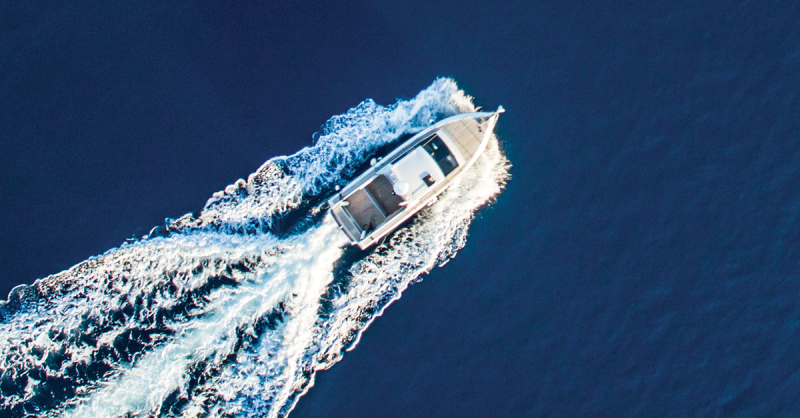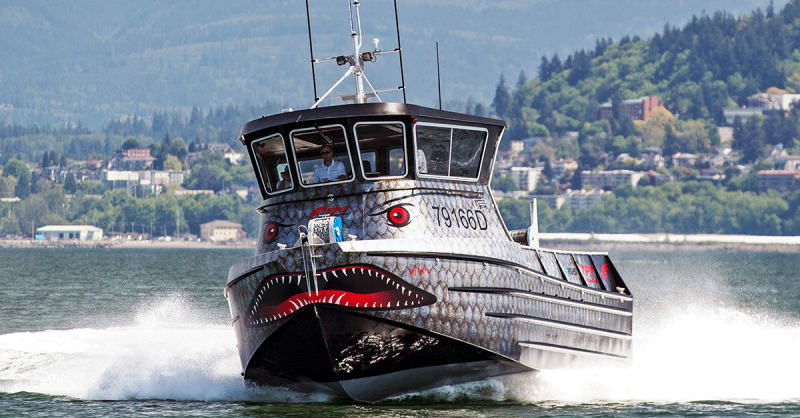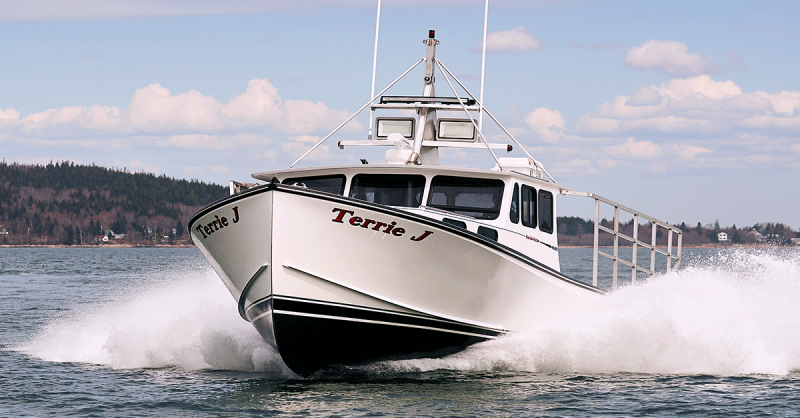October 29, 2021
Tackling higher emissions standards without sacrificing performance
FPT Industrial

Marine engine manufacturers face significant challenges brought on by evolving emissions regulations issued by the U.S. Environmental Protection Agency (EPA) and the International Maritime Organization (IMO). But there doesn’t have to be a tradeoff between performance and compliance.
Environmental Regulatory Reforms
The marine industry’s overall carbon emissions footprint is estimated to be 2% annually. While low in comparison to other sectors, the EPA, the IMO, and marine engine manufacturers alike recognize the unique impact of marine transportation on the environment.
Marine engine manufacturers who primarily do business in the displacement range below 599 kW are heavily focused on meeting EPA Tier 3 emissions levels, which applied beginning in 2016. With emphasis on use of high efficiency emission control technology, EPA Tier 3 standards are rooted in the significant reduction of Nitrogen Oxides (NOx) emissions and particulate matter (PM) – specifically 80% below the Tier 1 levels first established in 2003. Leading manufacturers like FPT Industrial are working tirelessly to develop environmentally friendly products that achieve customer objectives and meet ambitious Tier 3 emissions targets.
Complexity and Cost
EPA Tier 3 emissions standards and associated provisions add both complexity and significant cost for marine engine manufacturers to ensure compliance.
Regulatory provisions such as deterioration factor requirements establish more robust targets for NOx emissions output control, and further mandate that manufacturers demonstrate engine compliance for an extended period of time. This also inherently improves control of CO and HC emissions over longer periods of time. Commercial use engines, including the electronic control and combustion control components, must be reliable and durable enough to successfully undergo field testing at any time over the course of 10 years/10,000 hours of useful life to meet the same emissions targets as if they were brand new. The same criteria are applicable for recreational engines, but for a period of 10 years/1,000 hours of useful life.
NOx emissions output control, and further mandate that manufacturers demonstrate engine compliance for an extended period of time. This also inherently improves control of CO and HC emissions over longer periods of time. Commercial use engines, including the electronic control and combustion control components, must be reliable and durable enough to successfully undergo field testing at any time over the course of 10 years/10,000 hours of useful life to meet the same emissions targets as if they were brand new. The same criteria are applicable for recreational engines, but for a period of 10 years/1,000 hours of useful life.
For the first time, the EPA also established an emission warranty on all emissions-related components, which broadly includes anything related to combustion and control. In the case of FPT’s electronic engines, for example, that warranty must encompass the Engine Control Unit (ECU), the fuel injection system, as well as all sensors and wiring that integrate those components and deliver critical feedback. Again, extensive time and investment in research and development is necessary to meet mandated warranty requirements that span 5 years/5,000 hours and 5 years/500 hours for commercial and recreational marine engines respectively.

Compliance Testing and Oversight
The process for a marine engine to become EPA-certified is rigorous and requires manufacturers to undergo extensive certification and test cycles. Based on EPA Tier 3 standards, manufacturers must be prepared at any given time to demonstrate proof of compliance during and after the production process. For example, after starting a product production run following successful certified tests demonstrating compliance, the EPA can further spot check a manufacturer to ensure ongoing compliance in production.
Balancing Customer Demand
Generally, commercial and recreational customers are environmentally conscious themselves and seek to ensure that their vessel’s engine is operating as efficiently as possible with minimal impact to the environment. Customers expect not to see soot around the stern of the vessel, unburned fuel sheen on the water, or particulate matter floating around the hull. However, they remain vocal advocates about the importance of engine horsepower. Striking a balance between an engine that has a low environmental impact but delivers the power and performance customers demand is an industry-wide challenge.
Meeting New Standards
Tier 3 standards have driven all marine engine manufacturers to produce and develop more robust engine solutions. To achieve EPA and IMO targets, identifying ways to maximize control over engine behavior over an extended timeframe is key. FPT Industrial’s integrated combination of new mechanical technology and existing software technology traditionally used for on- and off-highway applications is the driving force behind development.
Mechanical and Software-Based Solutions
Optimizing combustion and combustion control in-cylinder is widely recognized as a path forward to deliver efficiency. For FPT, advancements in piston design, turbo charger mapping, electronic control, and Common Rail Fuel Injection systems, are key to this optimization. Architecturally, FPT engines meeting Tier 3 standards now include compacted graphite iron components and a high peak cylinder pressure (PCP) block design. They are also engineered with improvements to the cylinder head design, cylinder liner materials, and piston ring design.
The incorporation of Engine Control Unit (ECU) software, which controls the overall behavior of the engine based on customer input and demand, optimizes engine functionality using a series of algorithms. This technology has proven particularly useful in achieving the EPA Tier 3 regulations regarding “Not-to-Exceed Zones,” which require emissions compliance for an extended range of operation or use outside of the test cycle. The integration of ECU software, which is traditionally used for on- and off-highway applications, makes the engine more intuitive and adaptive to fuel injection components, maximizing fuel efficiency, reducing emissions levels, and reducing engine wear over time.
What’s Ahead
Experts across the marine industry expect further environmentally focused regulatory reforms to be introduced by the EPA and IMO moving forward. In response, innovative powertrain manufacturers like FPT Industrial are already developing new engines and technologies to help the industry stay ahead of the curve. Evolving standards, paired with opportunities for collaboration with suppliers, partners, and customers, will continue to drive forward-thinking solutions across the industry. With a renewed commitment to innovation, marine engine manufacturers will tackle emissions standards without sacrificing engine performance.
With more than 100 years of experience in high-power Diesel engines and marine operations, FPT Industrial offers the most complete line-up of fuel-efficient marine engines for commercial use and pleasure. A continued commitment to innovative research and development, FPT is a trusted global leader in delivering high-quality marine engines that balance power and performance with low environmental impact.
To learn more about FPT Industrial, visit https://www.fptindustrial.com/global/en/engines/marine/commercial





